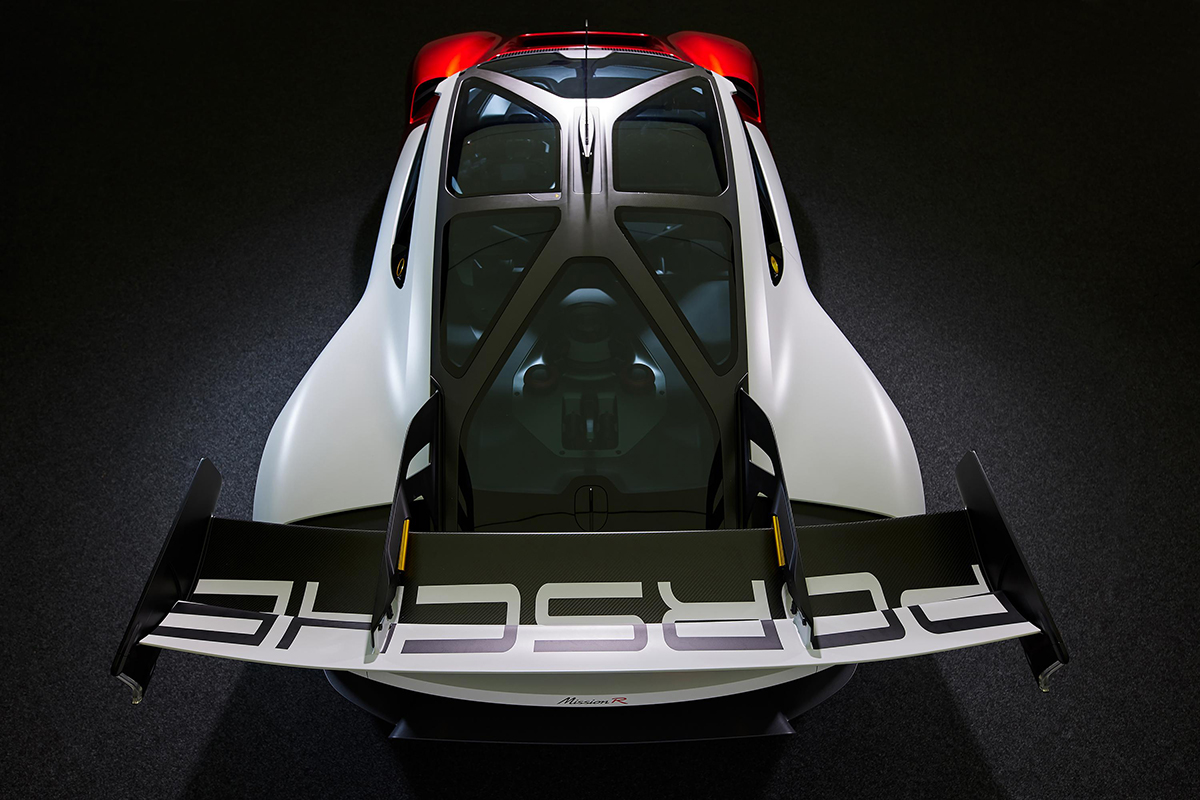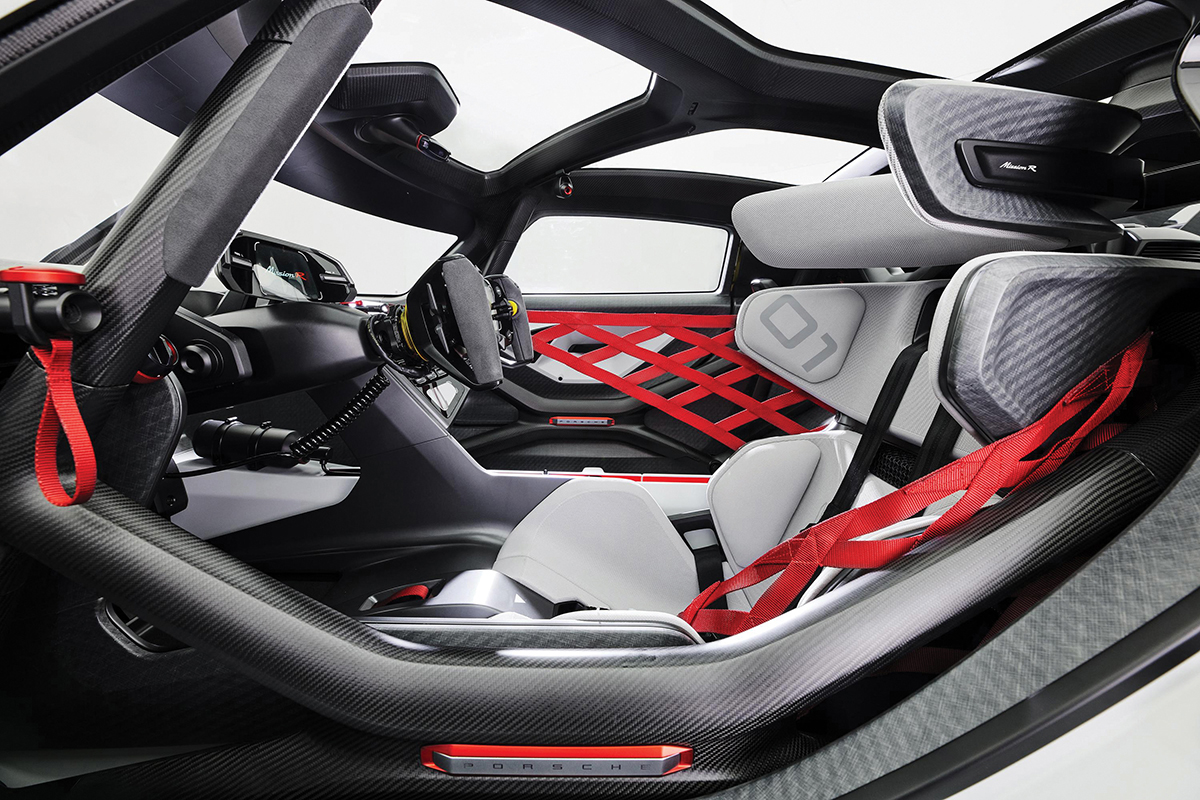Porsche is a past master at catching us unawares and it did so once again in September at the IAA Mobility, a transport show held in Munich. Here, with remarkably little in the way of rumour or teasers in the run-up, the wraps came off a top-secret design concept that previews a new generation of privateer Porsche racer. Called the Mission R, this compact sporting coupé is an all-electric purpose-built GT car designed, initially at least, to compete in single-make series like the Carrera Cup. However, if you read between the lines, its longer-term significance to the brand cannot be understated.

The most striking thing about the Mission R at first glance is quite how real it looks; how plausible. While that is partly thanks to the familiar Porsche Motorsport livery and design elements such as the rear wing and diffuser that could have been transplanted from a 911 RSR, there is also a convincing resolution to the whole form and an absence of show car fantasy that suggests this car is closer to production reality than many concepts.
Then there’s the fact it is a fully functioning prototype, capable of achieving its maximum claimed performance figures after many hundreds of hours of testing in the hands of Porsche’s go-to development driver Lars Kern and former Le Mans winner Timo Bernhard.
According to Porsche’s own literature at launch, the Mission R matches the performance level of the current 911 GT3 Cup car by using a 900v powertrain incorporating twin synchronous motors which make over 800 kW in qualifying mode, equivalent to 1073bhp. The car makes around 600bhp in race conditions but, crucially, that power output is designed to remain constant across a 30-minute sprint – something that has been made possible thanks to some very clever direct oil cooling technology developed in-house by Porsche.
The Mission R weighs around 1,500kg, pretty light for an EV, and will accelerate from zero to 62mph in less than 2.5 seconds on its way to a top speed of more than 185mph. Although these are not mind-boggling numbers in this segment, Porsche is keen to point out that the Mission R’s drivetrain has been specifically developed for competitive and consistent one-make racing rather than headline performance figures. This should be music to our ears in these days of nonsensical 2000bhp hypercars with million-pound price tags.
Furthermore, at 4.3 metres in length and 1.9 metres in width, the Mission R is approximately the same very useable size as a 718 Cayman and shares its mid-engine configuration. However, in this instance, it is not the motor but a 150kg battery that sits directly behind the driver. This allows the Mission R to hunker low to the ground, its roofline reduced still further by a carbon fibre exoskeleton that eschews the need for a traditional integral roll cage. Not only does this idea minimise the frontal area for greater aerodynamic efficiency, it also provides maximum protection for a minimal weight penalty. And, although a carbon fibre roll cage does not meet current FIA requirements, the concept could translate to road cars with considerably greater ease.
There are a few further nods to possible road-going applications here too. Those trademark four-point LED headlights are a signature of all the Mission R’s series production contemporaries, as is the rear light bar. Meanwhile, the aero packageis strongly reminiscent of Porsche’s GT cars and the Mission R features a fully functioning development of Porsche Active Aerodynamics (PAA), comprising three louvres in the air intakes on each side of the nose and an adjustable, two-section spoiler. It runs on 18-inch milled magnesium centre-lock wheels with carbon aeroblades, ideas familiar to the GT2 RS Clubsport and Taycan Turbo S respectively. It’s all real-world stuff in other words, which is very encouraging.

Inside the Mission R is a similar blend of stunning, forward-facing design alongside more familiar aspects of Porsche’s existing motorsport catalogue. The cockpit sets key displays and controls along the same axis, with information clustered on three levels of a race display between the steering wheel controls. A larger second screen is mounted on the steering column behind it, allowing the driver to see the images from the side-mounted cameras and the central rear-view mirror camera. Intriguingly, the Mission R’s driver module also doubles up as a racing simulator, the theory being that it will allow drivers to prepare virtually for their next race in a familiar environment or even take part in esports alongside their physical racing endeavours.
The motorsport message around the Mission R is being pushed very hard by Porsche, but it was only a couple of years ago that it initially announced that the next-generation Boxster and Cayman would be fully, and exclusively, electrified. The Mission R certainly appears to be that car. Has a single-make racer been put forward first due to the current limitations of battery technology? Or is this a means of softening us up to the idea of a truly sporty all-electric GT?
At the Mission R’s launch, Head of Style Porsche Michael Mauer had this to say on the subject: “Every Porsche has to be clearly recognisable as a Porsche. Many elements that we envisage in studies find their way later into production cars. This also applies to motorsports. Moreover, our customer sports vehicles are always based on production sports cars. What this means in the case of the Mission R is that the car is packed to the gills with signs that hint of a future production model, and that, of course, means pure racing!”
Some fancy footwork, but the general consensus within the wider industry is that the Mission R will indeed be the 718 of tomorrow. That race series is expected by 2025, by which time Porsche has suggested a new generation of batteries will be offering improved range anyway.
It all points inexorably towards the marque’s goal of achieving CO2-neutral production by 2030. The Taycan will soon be joined by the next-generation Macan in pure EV form and the 718 will surely follow. The 911 will apparently be the last to do so but even that will eventually be forced to make the leap. Looking at the Mission R, it feels less like a cause for concern now. More one of celebration.